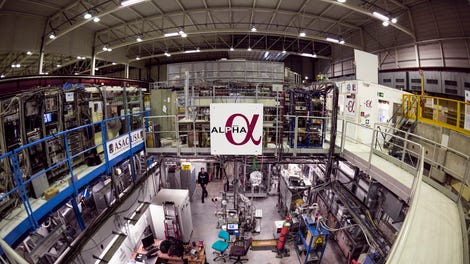http://www.nytimes.com/2013/05/03/b...-corporations-move-profit-to-avoid-taxes.html
Apple’s Move Keeps Profit Out of Reach of Taxes
High & Low Finance
By FLOYD NORRIS MAY 2, 2013
Continue reading the main story Share This Page
Photo

An Apple store in Grand Central. The company borrowed $17 billion in the largest corporate bond offering ever. Credit Lucas Jackson/Reuters
Why would a company with billions of dollars in the bank — and no plans for a large investment — decide to borrow billions more?
A decade ago, that was a question some short-sellers were asking about Parmalat, the Italian food company that had seemed to be coining money.
It turned out that the answer was not a happy one: The cash was not real. The auditors had been fooled. A huge fraud was being perpetrated.
Now it is a question that could be asked about Apple. Its March 30 balance sheet shows $145 billion in cash and marketable securities. But this week it borrowed $17 billion in the largest corporate bond offering ever.
Advertisement
Continue reading the main story
The answer for Apple is a more comforting one for investors, if not for those of us who pay taxes. The cash is real. But Apple has been a pioneer in tactics to avoid paying taxes to Uncle Sam. To distribute the cash to its owners would force it to pay taxes. So it borrows instead to buy back shares and increase its stock dividend.
Continue reading the main story
Advertisement
Continue reading the main story
The borrowings were at incredibly low interest rates, as low as 0.51 percent for three-year notes and topping out at 3.88 percent for 30-year bonds. And those interest payments will be tax-deductible.
Isn’t that nice of the government? Borrow money to avoid paying taxes, and reduce your tax bill even further.
Could this become the incident that brings on public outrage over our inequitable corporate tax system? Some companies actually pay something close to the nominal 35 percent United States corporate income tax rate. Those unfortunate companies tend to be in businesses like retailing. But companies with a lot of intellectual property — notably technology and pharmaceutical companies — get away with paying a fraction of that amount, if they pay any taxes at all.
Anger at such tax avoidance — we’re talking about presumably legal tax strategies, by the way — has been boiling in Europe, particularly in Britain.
Photo

Protests in Britain last December led Starbucks to promise to pay about £10 million, or $16 million, in extra British taxes. Credit Peter Macdiarmid/Getty Images
It got so bad that late last year Starbucks promised to pay an extra £10 million — about $16 million — in 2013 and 2014 above what it would normally have had to pay in British income taxes. What it would normally have paid is zero, because Starbucks claims its British subsidiary loses money. Of course, that subsidiary pays a lot for coffee sold to it by a profitable Starbucks subsidiary in Switzerland, and pays a large royalty for the right to use the company’s intellectual property to another subsidiary in the Netherlands. Starbucks said it understood that its customers were angry that it paid no taxes in Britain.
Starbucks could get away with paying no taxes in Britain, and Apple can get away with paying little in the United States relative to the profits it makes, thanks to what Edward D. Kleinbard, a law professor at the University of Southern California and a former chief of staff at the Congressional Joint Committee on Taxation, calls “stateless income,” in which multinational companies arrange to direct the bulk of their profits to low-tax or no-tax jurisdictions in which they may actually have only minimal operations.
Transfer pricing is an issue in all multinational companies and can be used to move profits from one country to another, but it is especially hard for countries to monitor prices on intellectual property, like patents and copyrights. There is unlikely to be a real market for that information, so challenging a company’s pricing is difficult.
Advertisement
Continue reading the main story
“It is easy to transfer the intellectual property to tax havens at a low price,” said Martin A. Sullivan, the chief economist of Tax Analysts, the publisher of Tax Notes. “When a foreign subsidiary pays a low price for this property, and collects royalties, it will have big profits.”
The United States, at least theoretically, taxes companies on their global profits. But taxes on overseas income are deferred until the profits are sent back to the United States.
The company makes no secret of the fact it has not paid taxes on a large part of its profits. “We are continuing to generate significant cash offshore and repatriating this cash will result in significant tax consequences under current U.S. tax law,” the company’s chief financial officer, Peter Oppenheimer, said last week.
A company spokesman says the company paid $6 billion in federal income taxes last year, and “several billion dollars in income taxes within the U.S. in 2011.” It is a testament to how profitable the company is that it would still face “significant tax consequences” if it used the cash it has to buy back stock.
There is something ridiculous about a tax system that encourages an American company to invest abroad rather than in the United States. But that is what we have.
“The fundamental problem we have in trying to tax corporations is that corporations are global,” says Eric Toder, co-director of the Tax Policy Center in Washington. “It is very, very hard for national entities to tax entities that are global, particularly when it is hard to know where their income originates.”
Photo

In principle, there are two ways the United States could get out of the current mess. The first, proposed by President John F. Kennedy more than 50 years ago, is to end the deferral. Companies would owe taxes on profits when they made them. There would be, of course, credits for taxes paid overseas, but if a company made money and did not otherwise pay taxes on it, it would owe them to the United States. After it paid the taxes, it could move the money wherever it wished without tax consequences.
President Obama has not gone that far, but he has suggested immediate taxation of foreign profits earned in tax havens, defined as countries with very low tax rates.
Some international companies hate that idea, of course. They warn that we would risk making American multinational corporations uncompetitive with other multinationals, and perhaps encourage some of them to change nationality.
Advertisement
Continue reading the main story
The other way is to move to what is called a territorial system, one in which countries tax only profits earned in those countries. Apple would then be free to bring the money home whenever it wanted, tax-free. But without doing something about the ease with which companies manage to claim profits are made wherever it is most convenient, that would simply be a recipe for giving up on collecting tax revenue. Companies around the world have done a good job of persuading countries to lower tax rates. Back in the 1980s, the American corporate tax rate of 34 percent was among the lowest in the world. Now the 35 percent United States tax rate on corporate income is among the highest. In this country, notwithstanding the high rate, the corporate income tax now brings in about 18 percent of all income tax revenue, with individuals paying the rest. That is half the share corporations paid when Dwight Eisenhower was president.
There seems to be something of a consensus developing around the idea that the United States rate should be lowered. Both President Obama and Representative Dave Camp, the chairman of the House Ways and Means Committee, say they want to do that without reducing government revenue, but they disagree on most details. Mr. Camp likes the territorial idea, but he concedes that we would have to do something about the ease with which companies move income from country to country.
In fact, the need for such a rate reduction is not as clear as it might be. Reuven Avi-Yonah, a tax law professor at the University of Michigan, studied the taxes paid by the 100 largest American and European multinationals and found that, on average, the Americans paid lower rates.
Professor Avi-Yonah says he thinks that the developed countries should cooperate and enact similar rules. He compares that to the American Foreign Corrupt Practices Act, which makes it illegal for American companies to bribe foreign governments. American companies used to say that was unfair, but now most developed countries have similar laws.
Something like that may be growing a little more likely. At the request of the Group of 20 governments, the Organization for Economic Cooperation and Development is doing a study called BEPS, for Base Erosion and Profit Shifting.
In Europe, where budget problems have grown drastically, there seems to be a growing understanding that governments must raise a certain amount of revenue and a belief that if one sector manages to avoid paying taxes, that means other sectors must pay more. That led to the anti-Starbucks demonstrations in Britain. In this country, there is little sign of similar attitudes, let alone a belief that those who find ways to twist the laws to avoid paying taxes are being unpatriotic.
If that belief were to become widespread, Apple and similar companies might find that their success in avoiding taxes was making them unpopular with other taxpayers — people whom Apple wants to be its customers.
Floyd Norris comments on finance and the economy at nytimes.com/economix.
A version of this article appears in print on May 3, 2013, on Page B1 of the New York edition with the headline: Apple’s Move Keeps Profit Out of Reach Of Taxes. Order Reprints| Today's Paper|Subscribe
Continue reading the main story
Related Coverage
What's Next
Apple’s Move Keeps Profit Out of Reach of Taxes
High & Low Finance
By FLOYD NORRIS MAY 2, 2013
Continue reading the main story Share This Page
Photo

An Apple store in Grand Central. The company borrowed $17 billion in the largest corporate bond offering ever. Credit Lucas Jackson/Reuters
Why would a company with billions of dollars in the bank — and no plans for a large investment — decide to borrow billions more?
A decade ago, that was a question some short-sellers were asking about Parmalat, the Italian food company that had seemed to be coining money.
It turned out that the answer was not a happy one: The cash was not real. The auditors had been fooled. A huge fraud was being perpetrated.
Now it is a question that could be asked about Apple. Its March 30 balance sheet shows $145 billion in cash and marketable securities. But this week it borrowed $17 billion in the largest corporate bond offering ever.
Advertisement
Continue reading the main story
The answer for Apple is a more comforting one for investors, if not for those of us who pay taxes. The cash is real. But Apple has been a pioneer in tactics to avoid paying taxes to Uncle Sam. To distribute the cash to its owners would force it to pay taxes. So it borrows instead to buy back shares and increase its stock dividend.
Continue reading the main story
Advertisement
Continue reading the main story
The borrowings were at incredibly low interest rates, as low as 0.51 percent for three-year notes and topping out at 3.88 percent for 30-year bonds. And those interest payments will be tax-deductible.
Isn’t that nice of the government? Borrow money to avoid paying taxes, and reduce your tax bill even further.
Could this become the incident that brings on public outrage over our inequitable corporate tax system? Some companies actually pay something close to the nominal 35 percent United States corporate income tax rate. Those unfortunate companies tend to be in businesses like retailing. But companies with a lot of intellectual property — notably technology and pharmaceutical companies — get away with paying a fraction of that amount, if they pay any taxes at all.
Anger at such tax avoidance — we’re talking about presumably legal tax strategies, by the way — has been boiling in Europe, particularly in Britain.
Photo

Protests in Britain last December led Starbucks to promise to pay about £10 million, or $16 million, in extra British taxes. Credit Peter Macdiarmid/Getty Images
It got so bad that late last year Starbucks promised to pay an extra £10 million — about $16 million — in 2013 and 2014 above what it would normally have had to pay in British income taxes. What it would normally have paid is zero, because Starbucks claims its British subsidiary loses money. Of course, that subsidiary pays a lot for coffee sold to it by a profitable Starbucks subsidiary in Switzerland, and pays a large royalty for the right to use the company’s intellectual property to another subsidiary in the Netherlands. Starbucks said it understood that its customers were angry that it paid no taxes in Britain.
Starbucks could get away with paying no taxes in Britain, and Apple can get away with paying little in the United States relative to the profits it makes, thanks to what Edward D. Kleinbard, a law professor at the University of Southern California and a former chief of staff at the Congressional Joint Committee on Taxation, calls “stateless income,” in which multinational companies arrange to direct the bulk of their profits to low-tax or no-tax jurisdictions in which they may actually have only minimal operations.
Transfer pricing is an issue in all multinational companies and can be used to move profits from one country to another, but it is especially hard for countries to monitor prices on intellectual property, like patents and copyrights. There is unlikely to be a real market for that information, so challenging a company’s pricing is difficult.
Advertisement
Continue reading the main story
“It is easy to transfer the intellectual property to tax havens at a low price,” said Martin A. Sullivan, the chief economist of Tax Analysts, the publisher of Tax Notes. “When a foreign subsidiary pays a low price for this property, and collects royalties, it will have big profits.”
The United States, at least theoretically, taxes companies on their global profits. But taxes on overseas income are deferred until the profits are sent back to the United States.
The company makes no secret of the fact it has not paid taxes on a large part of its profits. “We are continuing to generate significant cash offshore and repatriating this cash will result in significant tax consequences under current U.S. tax law,” the company’s chief financial officer, Peter Oppenheimer, said last week.
A company spokesman says the company paid $6 billion in federal income taxes last year, and “several billion dollars in income taxes within the U.S. in 2011.” It is a testament to how profitable the company is that it would still face “significant tax consequences” if it used the cash it has to buy back stock.
There is something ridiculous about a tax system that encourages an American company to invest abroad rather than in the United States. But that is what we have.
“The fundamental problem we have in trying to tax corporations is that corporations are global,” says Eric Toder, co-director of the Tax Policy Center in Washington. “It is very, very hard for national entities to tax entities that are global, particularly when it is hard to know where their income originates.”
Photo

In principle, there are two ways the United States could get out of the current mess. The first, proposed by President John F. Kennedy more than 50 years ago, is to end the deferral. Companies would owe taxes on profits when they made them. There would be, of course, credits for taxes paid overseas, but if a company made money and did not otherwise pay taxes on it, it would owe them to the United States. After it paid the taxes, it could move the money wherever it wished without tax consequences.
President Obama has not gone that far, but he has suggested immediate taxation of foreign profits earned in tax havens, defined as countries with very low tax rates.
Some international companies hate that idea, of course. They warn that we would risk making American multinational corporations uncompetitive with other multinationals, and perhaps encourage some of them to change nationality.
Advertisement
Continue reading the main story
The other way is to move to what is called a territorial system, one in which countries tax only profits earned in those countries. Apple would then be free to bring the money home whenever it wanted, tax-free. But without doing something about the ease with which companies manage to claim profits are made wherever it is most convenient, that would simply be a recipe for giving up on collecting tax revenue. Companies around the world have done a good job of persuading countries to lower tax rates. Back in the 1980s, the American corporate tax rate of 34 percent was among the lowest in the world. Now the 35 percent United States tax rate on corporate income is among the highest. In this country, notwithstanding the high rate, the corporate income tax now brings in about 18 percent of all income tax revenue, with individuals paying the rest. That is half the share corporations paid when Dwight Eisenhower was president.
There seems to be something of a consensus developing around the idea that the United States rate should be lowered. Both President Obama and Representative Dave Camp, the chairman of the House Ways and Means Committee, say they want to do that without reducing government revenue, but they disagree on most details. Mr. Camp likes the territorial idea, but he concedes that we would have to do something about the ease with which companies move income from country to country.
In fact, the need for such a rate reduction is not as clear as it might be. Reuven Avi-Yonah, a tax law professor at the University of Michigan, studied the taxes paid by the 100 largest American and European multinationals and found that, on average, the Americans paid lower rates.
Professor Avi-Yonah says he thinks that the developed countries should cooperate and enact similar rules. He compares that to the American Foreign Corrupt Practices Act, which makes it illegal for American companies to bribe foreign governments. American companies used to say that was unfair, but now most developed countries have similar laws.
Something like that may be growing a little more likely. At the request of the Group of 20 governments, the Organization for Economic Cooperation and Development is doing a study called BEPS, for Base Erosion and Profit Shifting.
In Europe, where budget problems have grown drastically, there seems to be a growing understanding that governments must raise a certain amount of revenue and a belief that if one sector manages to avoid paying taxes, that means other sectors must pay more. That led to the anti-Starbucks demonstrations in Britain. In this country, there is little sign of similar attitudes, let alone a belief that those who find ways to twist the laws to avoid paying taxes are being unpatriotic.
If that belief were to become widespread, Apple and similar companies might find that their success in avoiding taxes was making them unpopular with other taxpayers — people whom Apple wants to be its customers.
Floyd Norris comments on finance and the economy at nytimes.com/economix.
A version of this article appears in print on May 3, 2013, on Page B1 of the New York edition with the headline: Apple’s Move Keeps Profit Out of Reach Of Taxes. Order Reprints| Today's Paper|Subscribe
Continue reading the main story
Related Coverage
What's Next








